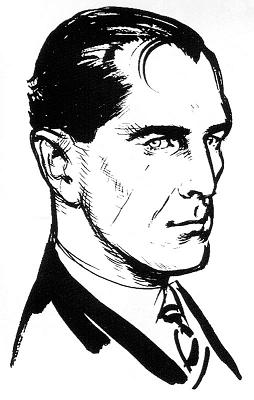What must British writer Ian Fleming have been thinking when he laid the last pencil stroke to his 1953-published manuscript Casino Royale? Did he breathe a sigh of relief? Toast his literary triumph? Smoke a cigarette? Who knows? Here's betting, though, that he never dreamed that Casino's protagonist, a dapper, British secret agent by the name of Bond... James Bond... would become the universal symbol of suaveness he is today.
Immortalized in 20 movies, depicted by five different A-list actors, and quoted by millions of the world's citizens, James Bond is an immutable pop culture brand. The unstoppable, gun-wielding, always-gets-his-girl, bad-guy-foiling 007 is an example of a creation that far surpasses even the wildest imaginations of his creator.
The basis for the Bond character was an amalgamation of people that inspired Ian Fleming during his time in the British Royal Navy's Volunteer Reserve. But the far-flung settings and situations in both Fleming's novels and the Bond film serials are complete fantasy, mostly concocted by a bored Fleming's wish that he could partake in the more daring and perilous missions of the enlisted men.
Strangely enough, the world's most famous spy got his name from a coffee table book. James Bond is the name of a real-life ornithologist who authored one of Fleming's wife's favorite perusal pieces, Field Guide to Birds of the West Indies. This was just the kind of unremarkable, self-effacing moniker that would contrast the highly conspicuous Casanova Fleming had written.
While Fleming's 15 Bond books and a cache of others penned by John E. Gardner are still widely read, it's the film incarnations of Bond that resonate with the larger audience. Bond made his first appearance media appearance in a 1954 television adaptation of Casino Royale. But when smooth-talking Sean Connery breathes big screen life into Fleming's crime-fighting fashion plate with 1962's Dr. No, a movie mogul was born. Connery portrayed Bond in six consecutive films before taking a brief sabbatical to make way for George Lazenby, by far the shortest-lived Bond doppelganger with his one appearance in 1969's On Her Majesty's Service. Connery returned in 1971 and again in 1983, with Diamonds are Forever and Never Say Never Again. Roger Moore filled in the gap from 1973 to 1985, before clearing the path for Timothy Dalton, who emerged in 1987's The Living Daylights. Pierce Brosnan began his run in 1995 with GoldenEye and ended with the 40th anniversary's Die Another Day. Daniel Craig took on the role with the series reboot Casino Royale and followed it with Quantum of Solace prior to this year's Skyfall.
Almost as well known and highly anticipated as each film's signature Bond actor are each film's standout "Bond Girl," a nickname given to the women often adorning the British playboy's arm. With memorable names like Kissy Suzuki (actress Mie Hama), Plenty O'Toole (Lana Wood), Honey Rider (Ursula Andress) and Domino (Kim Basinger), these scantily clad femme fatales either fight alongside agent 007 or threaten the undoing of Bond... James Bond.



